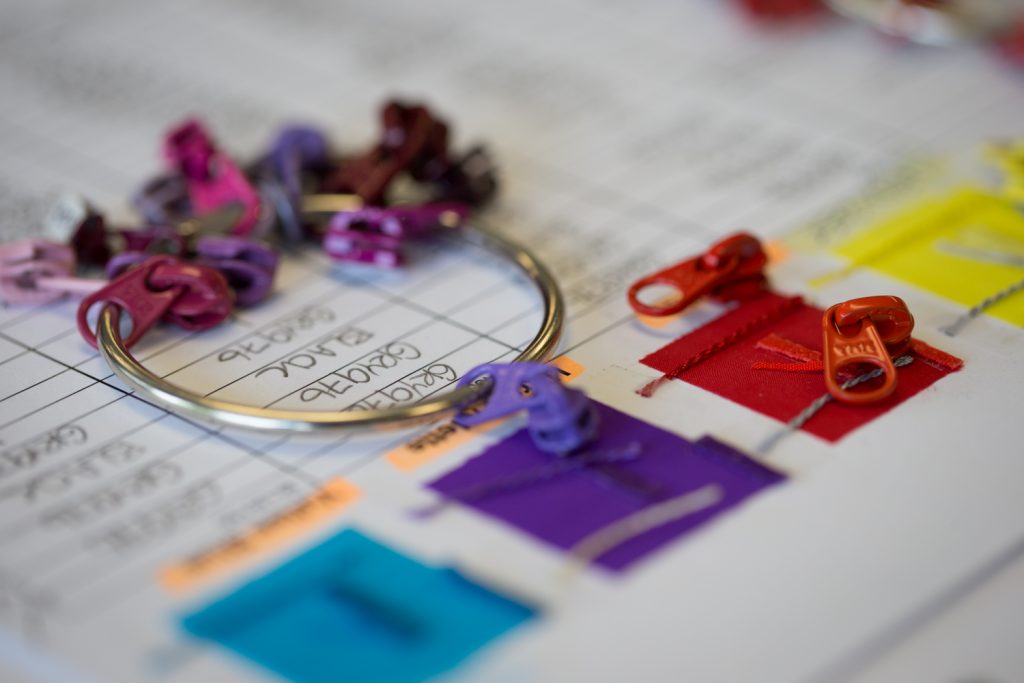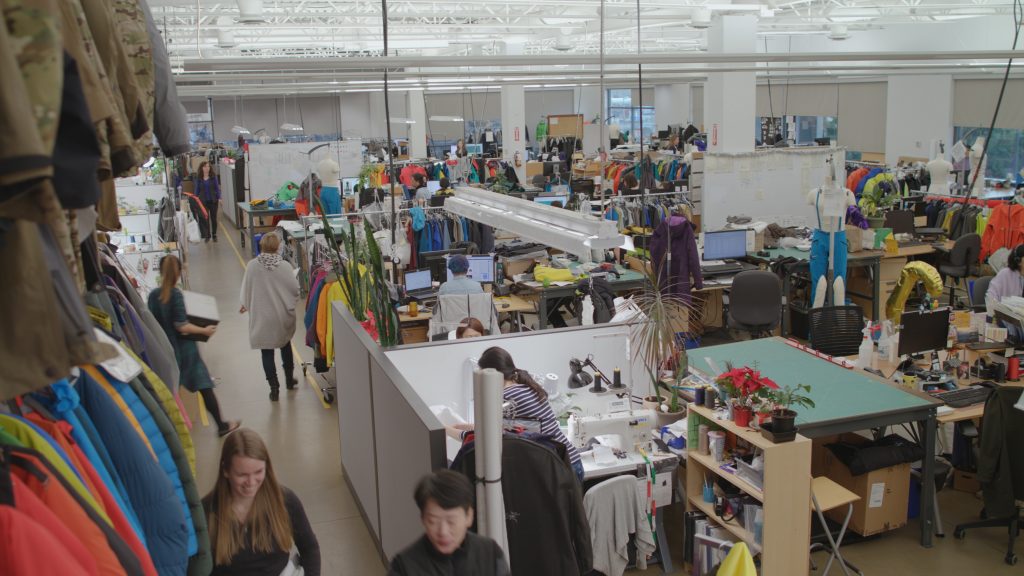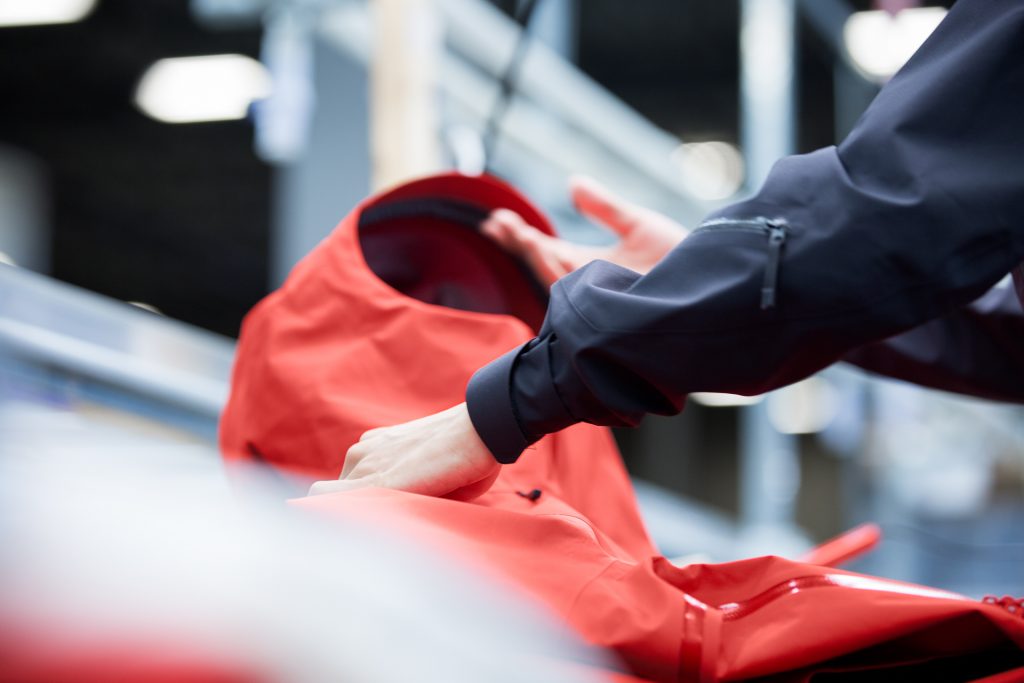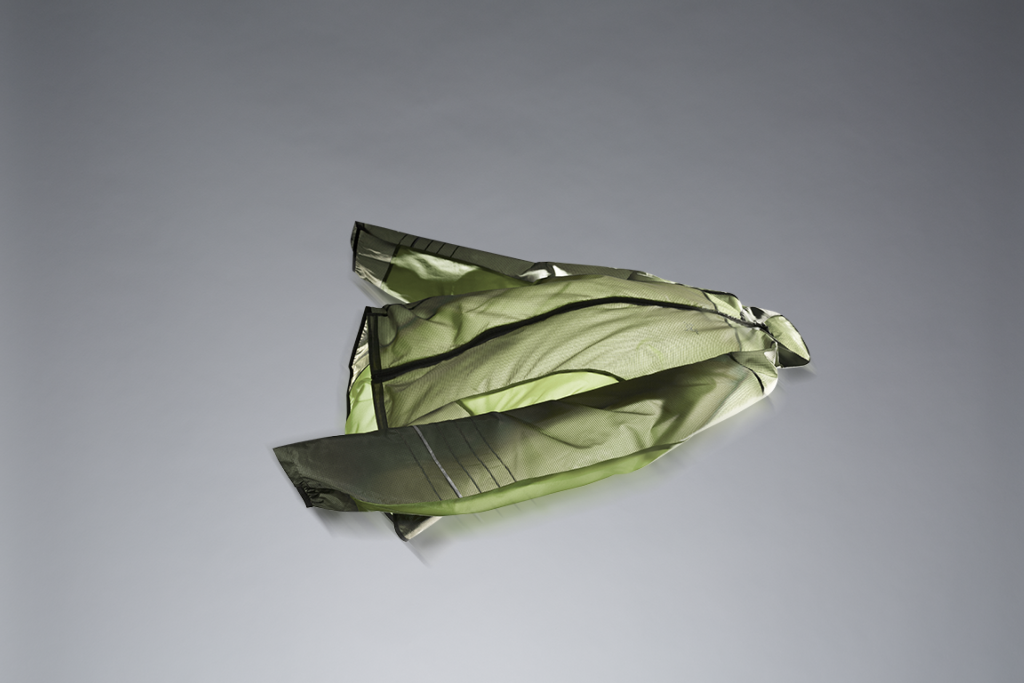Factory Visit: Arc’teryx
A sneak peek at new products, testing sites and more at the brand’s North Vancouver HQ

When we arrive at Arc’teryx headquarters, moody weather—a calling card of North Vancouver—has darkened the sky. Lush trees adorn the parking lot, blurring the light in the lobby with shadowy leaves. Inside the building, black steel beams frame the windows and hallways, like the darting lines on Arc’teryx clothing. It is nearly inescapable—this brand aesthetic—and it’s only the dozen or so dogs who come to work with their owners and the thrift store musk of the warranty services room that break the Arc’teryx aura. And frankly, those reasons only enhance the brand’s persona with charm.

Founded by climbers Dave Lane and Jeremy Guard, Arc’teryx (short for Archaeopteryx Lithographica, the oldest known bird) has been, and remains, the upper echelon of outdoor gear and apparel. They started with a simple concept: to make climbing harnesses stronger and more streamlined. Since then, the brand has been making all kinds of tech-forward, durable and understated climbing gear. When several members of the design team began to present to us products from their spring 2019 collection, it became clear that they’re not only thoughtful designers, but also mountain sports athletes themselves.

“Our products are created with the mindset of need first,” says Arc’teryx Design Manager Nancy Hoo, “so our users are very influential to how to think about product.” Hoo is a trail runner and, like the rest of the designers at Arc’teryx, she uses the brand’s products. Hoo’s former studies in fashion are evident in her designs. “I love fabrics. Materials, texture, feel, properties give me a starting point of what they can become,” she tells us. From early on, Hoo cites Issey Miyake as a significant inspiration. “His visions of garment construction and garment architecture are amazing to watch and study, along with his direction in materials and textures.”

Hoo shows us a new piece for spring 2019 called the Incendo SL, as well as the Cita SL, which is a lighter version of the current Cita—both are lightweight running jackets. The Incendo SL and the Cita SL feature a new material—a Polyester ripstop Canim fabric that offers superb wind-protection. Additionally, Permeair (an “air nylon”) is used for armpits and back panels for high airflow. Incredibly soft on the skin, this jacket avoids becoming sticky when sweaty. Little details like a pin-tuck cuff, a carrying system at the hip and refined darting give these jackets sophisticated silhouettes. But texture, fit and function were not her only concerns—noise was an important factor too. Hoo wanted to make the jackets silent while the wearer is on the move. These are the kinds of details Arc’teryx prides themselves on.

The Color Design team is located across the street from HQ, in a separate building with an airy open-floor plan. The “color corner” boasts mood-boards with tear-sheets and images that are a bursting plethora of colors, mesmerizing in their uniqueness. “Our process is complex, obsessive and layers on numerous aspects of the business—nothing in color is straight forward—everything about color is subjective,” says Ian Hoffman, Senior Manager of Color Design. “When it comes to coloring a collection in any given season we make easily 20 to 25,000 color decisions ranging from thread to self-fabrics and all the RMs in between for every product in the line.”
We are open to making changes late in the process and we are willing to work with serendipity
“We often are coloring just outside the hue groups you see with other brands,” Hoffman continues. “At the color table you will hear about muddy colors or muddy buddies. During the process of dipping color standards chosen for a given season, there often happy accidents as we pair fabrics in garments. We are open to making changes late in the process and we are willing to work with serendipity.”
Just beyond the “color corner” is separate wing called the Design Center. Arc’teryx is a rare company for modern times in that they have a manufacturing space—dubbed ArcOne—just 45 mins away, where they produce their harnesses and ionic SV Alpha jackets. But the Design Center is even more rare since it allows Arc’teryx designers an on-site facility to implement their designs.

The Design Center is filled with rows of sewing machines with proficient and dexterous couturières, machine presses, rolls of fabrics, swaths of hardware, along with racks upon racks of samples. There is a “feather” room dedicated to stuffing and testing down. On either side of the Design Center, designers bustle around, patterns in hand. Many of these designers are creating products they will later take down the hall to their testing facility or they will test products themselves in the mountains. Arc’teryx HQ is only about an hour’s drive from world-class climbing in Squamish and the vast wilderness of the Coast Mountains, which means the staff can, theoretically, design, create and test products in a day.
We leave Arc’teryx HQ and begin the ride up the gorgeous Sea-to-Sky Highway toward Squamish. The route hugs the coastline and then the Howe Sound, which rarely fails to give passengers awe-inspiring scenes even in its most misty conditions. Arriving at the Arc’teryx Climbing Academy (the brand’s annual event with clinics for the public taught by certified guides and pro-athletes) we stumble upon Arc’teryx designers and athletes collaborating. They are all making sketches and notes, while discussing their tweaks and thoughts. We go unnoticed, but can’t help but enjoy the fact that this seemingly messy meeting of the minds acts as the base for the flawless, precise and meticulously-crafted products that Arc’teryx makes. It’s evolution in the works.
Images courtesy of Arc’teryx












